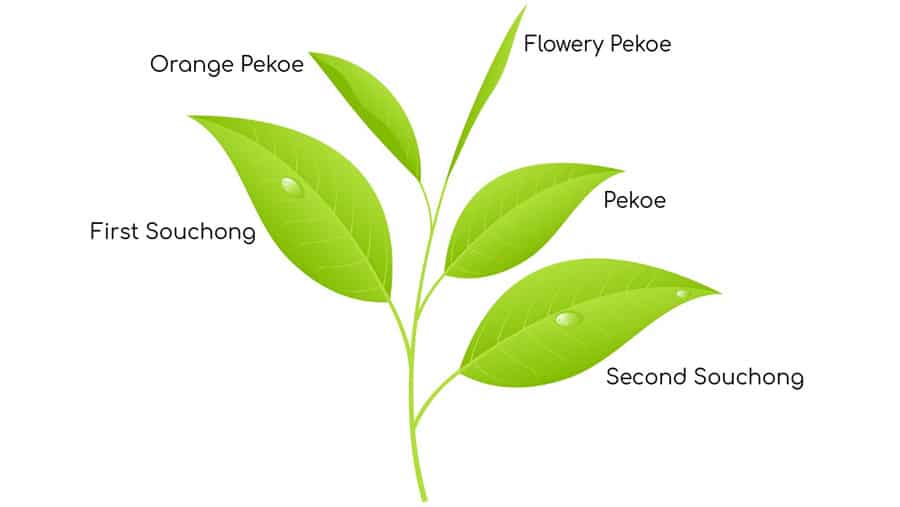
Debunking the Big Misconception About Orange Pekoe Tea
What comes to your mind when you hear the term orange pekoe? The lovely aroma of citrus and orange blossoms? A delicious tea that tastes of oranges? In fact, the term really has absolutely nothing to do with the orange fruit.
According to James Norwood Pratt’s Tea Dictionary the correct definition of orange pekoe is this: A manufacturing term for the largest grade of black tea with long, unbroken, full leaves.
How Is Tea Graded?
So as you can see, orange pekoe has nothing to do with oranges and everything to do with tea quality.
Traditionally, the term was associated with the placement of the leaf itself on the tea bush. The Chinese were the first to begin a tea grading system that allowed people to distinguish which tea leaves were better quality than others.
Special names were assigned to the different leaves of the tea plant starting at the topmost leaf or bud and moving down the stem of the plant toward the roots.
In the above picture the following tea leaf names are shown:
- Flowery pekoe: The first bud of the plant. It is loaded with antioxidants and highly prized.
- Orange pekoe: The first leaf that appears after the bud. The most tender of the whole leaves and has a high amount of antioxidants.
- Pekoe:The second leaf after the bud.
- First souchong: The third leaf after the bud. It is older and not as tender as the first two leaves.
- Second souchong: A leaf considered to be of inferior quality. Older, more fibrous and has less antioxidants.
As you move down the plant, the quality and desirability of the leaves lessens. For orthodox tea production, which simply means using more traditional manual methods, the top three leaves are hand plucked.
The lower two leaf types are usually picked by mechanical harvesters and produce coarser teas with a much lower level of antioxidants.
Common Tea Grading Terms
Grading terms and their abbreviations that you commonly see on tea packaging vary from country to country, but here are some that you may see in your local store. Remember that these refer to full tea leaves only.
- OP: Orange pekoe
- FOP: Flowery Orange pekoe
- GFOP: Golden Flowery Orange pekoe
- TGFOP: Tippy Golden Flowery Orange pekoe
A simple rule to remember when looking for high quality full leaf tea is: the more letters the better. The rules for broken leaves and tea bags, however, are completely different.
Whole Leaves Are Best
Just know that when choosing your tea, you should always try to get whole leaves whenever possible. The flavor, aroma and health benefits far exceed broken leaf pieces or bits most often found in tea bags.
When I first began Beleave Teas, I only carried loose leaf teas for the reasons that I just mentioned above, but recently I added a selection of Tea Sachets. Tea Sachets make the very best loose-leaf tea easy and portable without skimping on quality.
So even though the term orange pekoe may conjure up visions of exotic citrus flavors and admittedly the early Dutch traders might have used ‘orange’ to suggest Holland’s ruling House of Orange, you can be sure that these are not its true meaning.
Orange pekoe stands for tea quality, but as always, doing your research and knowing where your tea comes from is essential.
What do you look for in high-quality loose leaf tea? Have you found any tips that will be helpful to the community? Please share them in the comments below.







